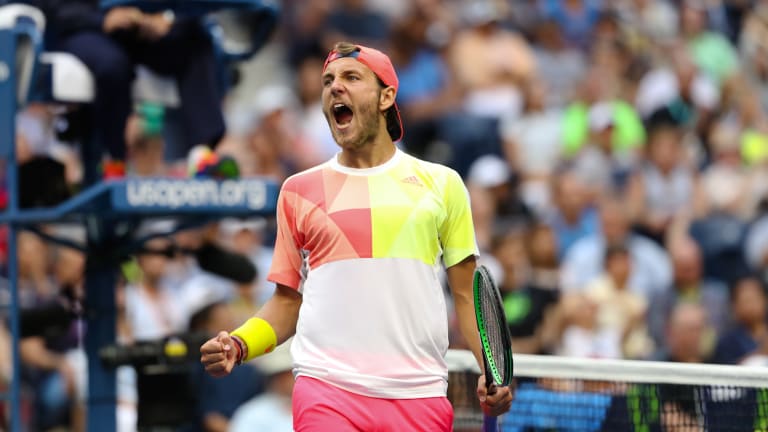NEW YORK—When Rafael Nadal and Lucas Pouille turned into the homestretch of their five-set epic at the U.S. Open on Sunday, everything—stats, talent, experience, logic—should have pointed to a Rafa victory. He was the 14-time Grand Slam champion, and a man who had reached No. 1 in the world by extricating himself from countless situations just like this one, against opponents far more legendary. Pouille, on the other hand, was the 22-year-old novice who had yet to crack the Top 20, who had reached the quarterfinals at a major just once, and who was playing his first-ever match in the intimidating confines of Arthur Ashe Stadium.
And yet, if you’ve been following Nadal’s career over the last two years—as he turned 30 and stopped reaching the final weekend at Slams—some doubt about his ability to close this one out probably crept into your mind. This story had become a little too familiar for Nadal fans.
There was the loss from two sets up to Fabio Fognini at Flushing Meadows in 2015. There was the first-round, five-set defeat to Fernando Verdasco at the Australian Open this year. There was the loss in a third-set tiebreaker to Juan Martin del Potro in the semifinals in Rio, with a chance at a gold medal on the line. There were the many hard-fought but ultimately unsuccessful efforts against Novak Djokovic over the last two years. Rafa has come a long way with his game during that time—back into the Top 5—and this summer he returned quickly enough from a wrist injury to have an excellent week at the Olympics. But the finish line, in the biggest matches, has often proved to be one step—or one winner—too far for him.
